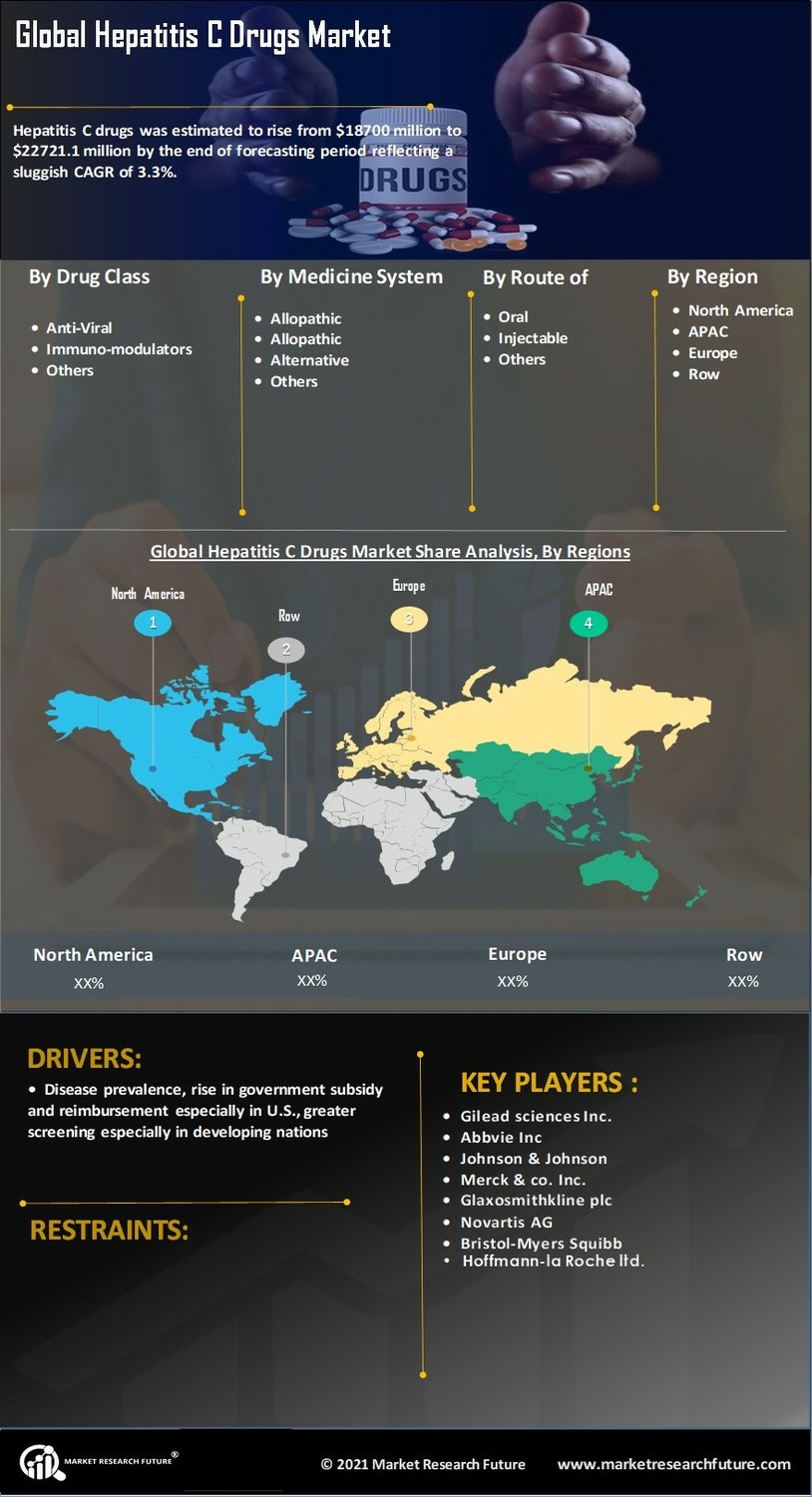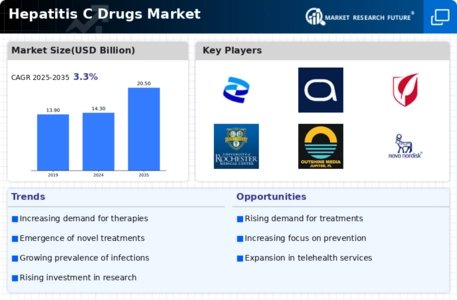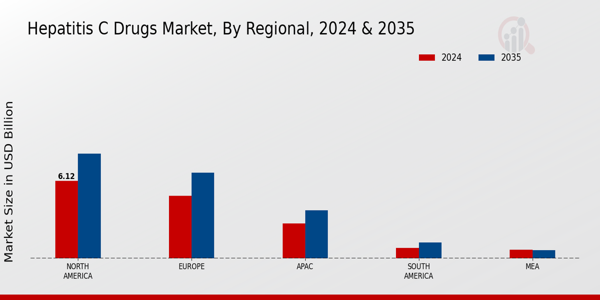Market Trends and Projections
Advancements in Drug Development
Innovations in drug development significantly influence the Global Hepatitis C Drugs Market Industry. The introduction of direct-acting antivirals (DAAs) has transformed treatment protocols, offering higher cure rates and shorter treatment durations. For instance, drugs like Sofosbuvir and Velpatasvir have demonstrated cure rates exceeding 95 percent. These advancements not only improve patient outcomes but also enhance the overall efficiency of healthcare systems. As a result, the market is expected to grow steadily, with projections indicating a rise to 20.5 USD Billion by 2035, driven by ongoing research and development efforts.
Rising Prevalence of Hepatitis C
The increasing prevalence of Hepatitis C globally serves as a primary driver for the Global Hepatitis C Drugs Market Industry. According to estimates, approximately 71 million people worldwide are living with chronic Hepatitis C, highlighting a substantial patient population in need of effective treatment. This rising incidence necessitates the development and distribution of antiviral therapies, which are crucial for managing the disease. As healthcare systems strive to address this growing burden, the market is projected to reach 14.3 USD Billion in 2024, reflecting the urgent demand for innovative Hepatitis C drugs.
Government Initiatives and Funding
Government initiatives aimed at combating Hepatitis C significantly bolster the Global Hepatitis C Drugs Market Industry. Many countries have implemented national strategies to eliminate Hepatitis C, which include increasing access to testing and treatment. For example, the World Health Organization has set ambitious targets for Hepatitis C elimination by 2030, prompting governments to allocate substantial funding for drug procurement and healthcare infrastructure. This proactive approach not only enhances treatment accessibility but also stimulates market growth, as evidenced by the projected CAGR of 3.3% from 2025 to 2035.
Emerging Markets and Economic Growth
The expansion of emerging markets presents a significant opportunity for the Global Hepatitis C Drugs Market Industry. Countries in Asia, Africa, and Latin America are experiencing economic growth, which is correlated with improved healthcare access and increased spending on pharmaceuticals. As healthcare systems in these regions evolve, the demand for Hepatitis C treatments is likely to rise. This trend is particularly relevant as global pharmaceutical companies seek to penetrate these markets, thereby driving competition and innovation. The anticipated growth in these regions could further contribute to the overall market expansion.
Growing Awareness and Screening Programs
The rising awareness of Hepatitis C and the importance of early detection are pivotal in driving the Global Hepatitis C Drugs Market Industry. Public health campaigns and screening programs have been instrumental in educating populations about the disease, leading to increased testing rates. For instance, initiatives in various countries have successfully identified previously undiagnosed individuals, thus expanding the treatment pool. This heightened awareness not only facilitates timely intervention but also contributes to market growth, as more patients seek effective antiviral therapies to manage their condition.
















